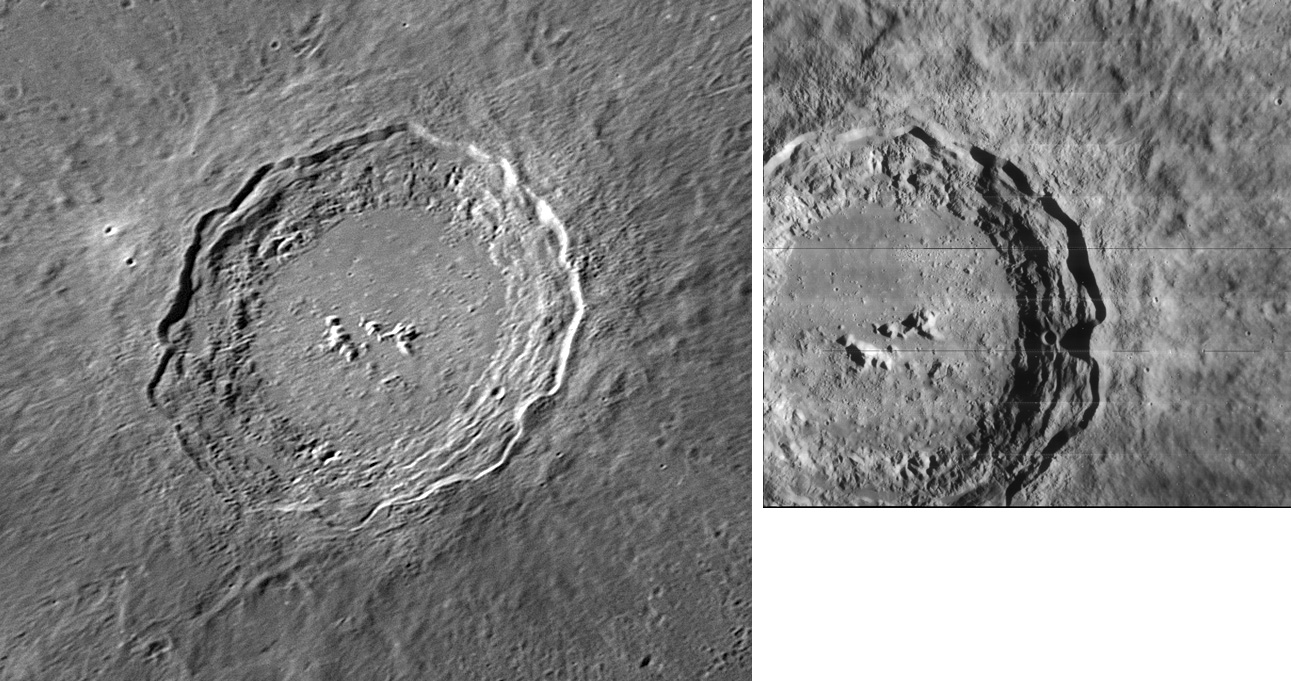
images by Wes Higgins (left) and Lunar Orbiter IV-123 (right)
For decades there were informal competitions to see who could map and then image the maximum number of craterpits on the floor of Plato. But now that amazing techniques allow amateurs with 5″ scopes to depict the 2 km wide pits, a new challenge is necessary. And Wes has established the playing field and set the bar very high. Copernicus has always been a target of observers because of its size, freshness and commanding position. But now with this image (and the matching Lunar Orbiter IV one) it is seen that its floor has a small number of tiny craters. I have estimated the widths of a few of the pits. The largest, Copernicus A, high on the east wall under the peak Copernicus Alpha, is 3.5 km in diameter. On the upper right quadrant of the floor there are three pits defining a right angle - the corner one is 1.2 km wide. Halfway up the northwest wall is a sharp pit 750 m in diameter. These three provide targets and dimensions for judging future images. And while you are at Copernicus notice the intricate scalloping of the rim and each associated slump deposit. Look at Wes’ full image to see fascinating details beyond Copernicus’ rim.
Technical Details:
September14, 2006, 18″ Reflector, Infinity 2-1m camera, MAP processing, stack of 330 frames.
Related Links:
Rükl plate 31
Wes’ website
Clementine hi Sun view
Bruno Daversin’s excellent view
Yesterday's LPOD: Mercy, Mersenius!
Tomorrow's LPOD: A Lunar Geologist is Born
COMMENTS?
Register, and click on the Discussion tab at the top of the page.
Contributions to http://www2.lpod.org/ are licensed under a Creative Commons Attribution No-Derivative-Works Non-Commercial 3.0 License. 



